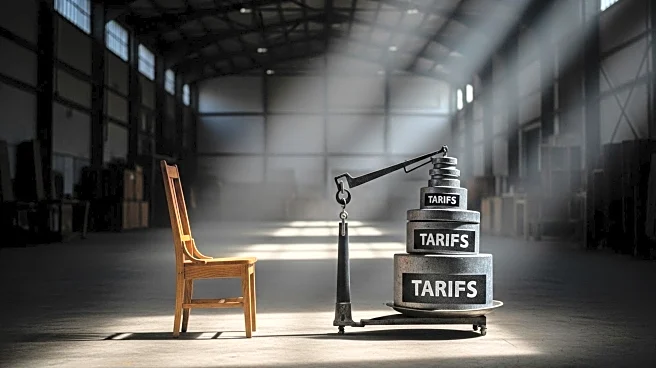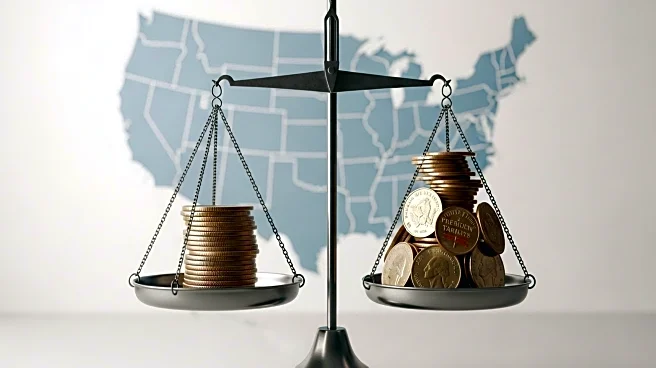What's Happening?
New tariffs on imported kitchen cabinets, bathroom vanities, and upholstered wooden furniture have been implemented, with rates set to increase significantly by January. The tariffs are part of President
Trump's efforts to address national security concerns and protect U.S. manufacturers. While some in the home improvement industry hope the tariffs will boost domestic production, others anticipate short-term challenges, including increased costs and reduced product variety. Importers may focus on best-selling products to manage costs, potentially limiting consumer choices.
Why It's Important?
The tariffs could have a substantial impact on the home improvement industry, affecting both businesses and consumers. While some companies may benefit from increased demand for domestically produced goods, others may struggle with higher costs and reduced product variety. The tariffs could lead to increased prices for consumers, particularly those planning renovations, and may influence purchasing decisions. The move also highlights broader trade policy issues and the potential consequences of protectionist measures on global supply chains.
What's Next?
As the tariffs take effect, businesses in the home improvement sector will need to adapt to the changing landscape. Some may seek to absorb costs to maintain customer loyalty, while others may pass on the increased expenses to consumers. The potential for new trade agreements could alter the tariff situation, and industry groups may advocate for changes to mitigate the impact. Additionally, the tariffs could prompt discussions on the feasibility of increasing domestic production to offset import costs.
Beyond the Headlines
The tariffs raise questions about the balance between protecting domestic industries and the potential negative impact on consumers. The move could lead to long-term shifts in trade relationships and domestic production strategies. It also underscores the complexity of global supply chains and the challenges of implementing protectionist policies in a highly interconnected economy.











